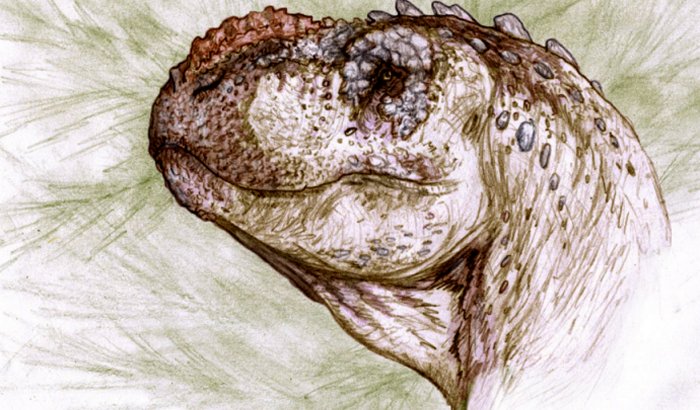Eddie Gonzales Jr. – MessageToEagle.com – A new species of carnivorous dinosaur that inhabited Patagonia 90 million years ago were discovered by a team of paleontologists.
The new species that was named as Tralkasaurus cuyi measured about four meters. Researchers say it is much smaller than the carnivorous dinosaurs from the abelisaurus theropods group known until now.

The fossil remains of the species were found at the northwest of Río Negro province, in the Ezequiel Ramos Mejía Reservoir, 25 kilometers from the city of Villa El Chocón.
Tralkasaurus means “thunder reptile” in the Mapuche language, while Cuyi refers to the place where it was found, the El Cuy plateau.
“The materials found are diagnostic to describe this new species: the maxillary bone, that is part of the snout, was found from the skull and it still preserves some teeth,” the researcher Mauricio Cerroni of the Argentine Museum of Natural Sciences (MACN) and of the National Council of Scientific and Technical Research CONICET told the CTyS-UNLaM Agency.
“As for the rest of the skeleton, cervical ribs were found, which come out from the neck and are very long, so it is thought that they are tendons that have fossilized; in addition, part of the hip and tail spine was found”, said the lead author of the study published in Journal of South American Earth Sciences.
“The body size of the Tralkasaurus is smaller than that of other carnivores in its group, the abelisaurs, since it is around four meters in length, while the previously known are between seven and eleven meters,” said Dr. Federico Agnolin, researcher of the Argentine Museum of Natural Sciences (MACN) and of the National Council of Scientific and Technical Research (CONICET).
In theropods dinosaurs group is, for example, the famous Tyrannosaurus rex, which is native to North America, which reached 14 meters, or the Carnotaurus sastrei from Chubut (which also won some fame in Hollywood with a Disney movie) that reached 10 meters long.
“The Tralkasaurus, because of being much smaller, reveals that the group of abelisaurus theropods encompassed a much wider ecological niche than previously thought”, said Cerroni.
Although its size is very small compared to the Tyrannosaurus or Carnotaurus (a species which has horns), this new Río Negro’s dinosaur shares with them the characteristics of being a biped animal, short-necked and muscular, with four claws in each of its hind legs, while its arms were also very short in relation to its body and the bones of its limbs were light and hollow.
It is possible that Tralkasaurus fed on the small herbivorous dinosaurs known as iguanodontes, which were found by the same team of paleontologists in nearby locations, along with other species such as turtles and lizards.
“This new discovery is that it helps us to define the ecological habits of both carnivorous dinosaurs and herbivores,” said Cerroni.
According to Dr. Agnolín “the snout of this new species has a lot of ornamentation, that is, an outer surface marked by roughness (a characteristic of the snout of these carnivores), which makes us assume that, in instead of having horns like Carnotaurus, it could have had small or poorly developed corneal structures.”
Meanwhile, Cerroni highlighted a particularity in the bones of the middle region of the column of this new species. “There is an element that supports the rib that is very thin, something that has never been seen in any other group of carnivores”.
The name, which this new abelisaurid dinosaur was baptized, comes from the Mapundungum, colloquially known as the Mapuche language, and means “Thunder Reptile.” The middle name “cuyi” refers to the place where it was found, the El Cuy plateau, in the province of Rio Negro.
Written by Eddie Gonzales Jr. – MessageToEagle.com Staff







